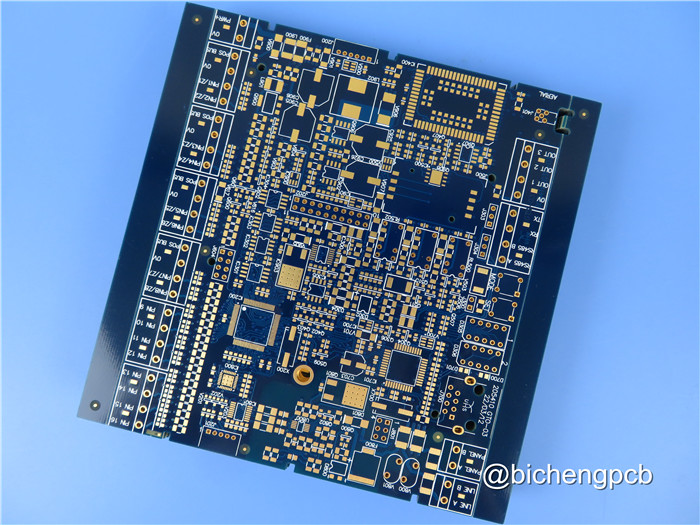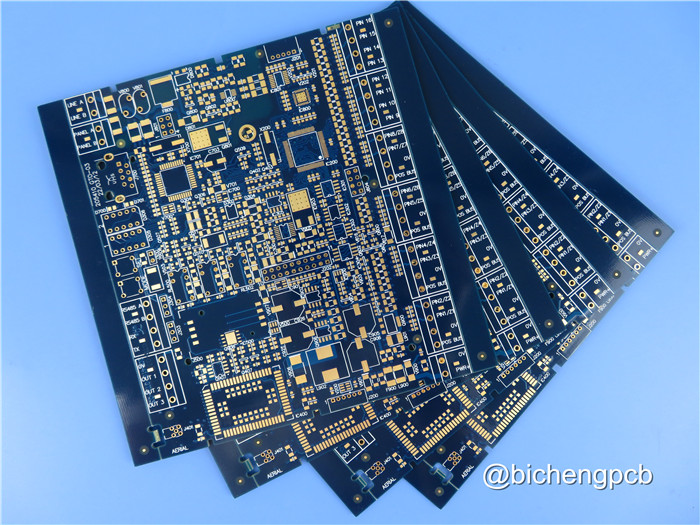Analysis of the
High-Speed PCB Industry
Introduction:
The
high-speed PCB industry plays a pivotal role in meeting the increasing demand
for electronic devices capable of handling high-frequency signals and data
transmission. This analysis provides an in-depth exploration of the high-speed
PCB industry, including its market dynamics, technological advancements,
challenges, and future prospects.
Market Dynamics
1)Growing Demand
The
demand for high-speed PCBs is driven by various factors, including the rapid
growth of technologies such as 5G wireless communication, Internet of Things
(IoT), cloud computing, artificial intelligence (AI), and autonomous vehicles.
These applications require high-performance electronic devices that can
reliably transmit and process data at high speeds.
2)Communication Infrastructure
The
deployment of 5G networks is a significant driver for the high-speed PCB
industry. The implementation of 5G requires advanced communication
infrastructure, including base stations, antennas, and network equipment, which
heavily rely on high-speed PCBs. The demand for faster data rates, reduced
latency, and increased bandwidth necessitates the use of high-speed PCBs to
ensure reliable signal integrity.
3)Automotive Electronics
The
automotive industry is another key driver of the high-speed PCB market. The
integration of electronic systems for advanced driver assistance systems
(ADAS), infotainment systems, radar systems, and electric vehicle powertrains
requires high-speed PCBs to handle the increased data processing and
communication requirements. The shift towards electric vehicles and autonomous
driving technologies further fuels the demand for high-speed PCBs in this
sector.
4)Miniaturization and High-Density Interconnects
The
continuous drive for smaller and lighter electronic devices with increased
functionality has led to the miniaturization of components and the need for
high-density interconnects. High-speed PCBs with smaller form factors,
high-density routing, and advanced technologies like microvias and high-density
interconnect (HDI) are essential to accommodate the miniaturization trend while
maintaining signal integrity and performance.

Technological Advancements
1)Advanced Materials
High-speed
PCBs require materials with excellent electrical properties, such as low
dielectric constant and low loss tangent, to minimize signal loss and maintain
signal integrity. Materials like FR-4, PTFE (Polytetrafluoroethylene), and
specialty laminates are commonly used. The development of new materials with
improved electrical characteristics is an ongoing focus in the industry.
2)Controlled Impedance and Signal Integrity
Maintaining
controlled impedance is critical in high-speed PCB design to minimize signal
reflections, crosstalk, and electromagnetic interference (EMI). Designers
employ techniques like controlled trace widths, controlled dielectric
thickness, differential signaling, and optimized ground planes to ensure signal
integrity and reduce signal degradation.
3)Simulation and Modeling Tools
Advanced
simulation and modeling tools are instrumental in high-speed PCB design. These
tools enable designers to analyze signal behavior, identify potential issues,
and optimize the layout before fabrication. Techniques such as electromagnetic
simulation, eye diagram analysis, and time-domain reflectometry (TDR) aid in
predicting and mitigating signal integrity issues.
4)Design for Manufacturability (DFM)
Designing
high-speed PCBs requires consideration of manufacturing processes and
constraints. Collaborative efforts between design engineers and PCB
manufacturers are crucial to ensure manufacturability, optimize signal routing,
and address potential fabrication challenges. Design for Manufacturability
(DFM) guidelines and practices are employed to enhance yield and reduce
manufacturing costs.
Challenges and Considerations
1)Signal Integrity and EMI
High-speed
PCB design presents challenges related to signal integrity, including impedance
matching, signal reflections, crosstalk, and electromagnetic interference
(EMI). Designers must carefully manage trace lengths, control impedance, and
employ shielding techniques to mitigate these challenges and maintain signal
integrity.
2)Thermal Management
High-speed
electronic devices generate heat, which can impact signal integrity and
reliability. Effective thermal management techniques, such as proper heat
sinking, thermal vias, and appropriate board layouts, are essential to
dissipate heat and prevent thermal-induced issues.
3)Design Constraints
High-speed
PCB design requires careful consideration of design constraints, such as
controlled impedance, tight tolerances, and design rules specific to high-speed
applications. Compliance with industry standards and design guidelines, such as
those provided by the Institute of Electrical and Electronics Engineers (IEEE)
and the IPC (Association Connecting Electronics Industries), is necessary to
ensure interoperability and compatibility.
Future Prospects
1)Emerging Technologies
The
high-speed PCB industry is expected to benefit from emerging technologies like
5G, mmWave communication, and optical interconnects. These technologies will
drive the need for even higher data rates, improved signal integrity, and
advanced PCB designs capable of handling the increasing demands of future
applications.
2)Industry Collaboration and Expertise
Collaboration
between PCB manufacturers, design engineers, and semiconductor companies will
be crucial for addressing the evolving challenges of high-speed PCB design.
Expertise in high-speed design, signal integrity analysis, and manufacturing
processes will continue to be vital to meet the stringent requirements of
high-speed applications.
3)Advances in Materials and Manufacturing
Ongoing
advancements in materials, fabrication techniques, and design methodologies
will further enhance the capabilities of high-speed PCBs. The development of
new materials with improved electrical properties, advanced fabrication
techniques like additive manufacturing, and innovative design methodologies
will contribute to the continued evolution of the high-speed PCB industry.
4)Increased Focus on Signal Integrity
As
data rates and frequencies continue to rise, ensuring robust signal integrity
will remain a critical concern in high-speed PCB design. Designers will need to
adopt advanced simulation tools, modeling techniques, and signal integrity
analysis methodologies to optimize signal performance and minimize noise and
interference.
5)Sustainability and Environmental Considerations
Like
the broader electronics industry, the high-speed PCB industry is likely to face
increasing pressure to adopt sustainable practices. This includes using
eco-friendly materials, minimizing waste, and implementing recycling
initiatives to reduce the environmental impact of PCB manufacturing processes.

Conclusion:
The
high-speed PCB industry is driven by the growing demand for high-performance
electronic devices capable of handling high-frequency signals and data
transmission. With the deployment of 5G networks, advancements in automotive
electronics, and the ongoing trend towards miniaturization, the demand for
high-speed PCBs is expected to continue to rise.
Technological
advancements in materials, simulation tools, and manufacturing processes will
enable the development of high-speed PCBs with improved signal integrity,
reduced signal loss, and increased reliability. However, challenges related to
signal integrity, thermal management, and design constraints must be carefully
addressed to ensure optimal performance, such as M6 high speed PCB.
Collaboration
between industry stakeholders and the adoption of best practices, such as
design for manufacturability and compliance with industry standards, will be
essential for driving innovation and meeting the evolving needs of high-speed
applications.
Looking
ahead, emerging technologies, industry collaboration, and sustainability
considerations will shape the future of the high-speed PCB industry as it
continues to play a critical role in enabling the next generation of
high-performance electronic devices.

 Call Us Now !
Tel : +86 755 27374946
Call Us Now !
Tel : +86 755 27374946
 Order Online Now !
Email : info@bichengpcb.com
Order Online Now !
Email : info@bichengpcb.com















